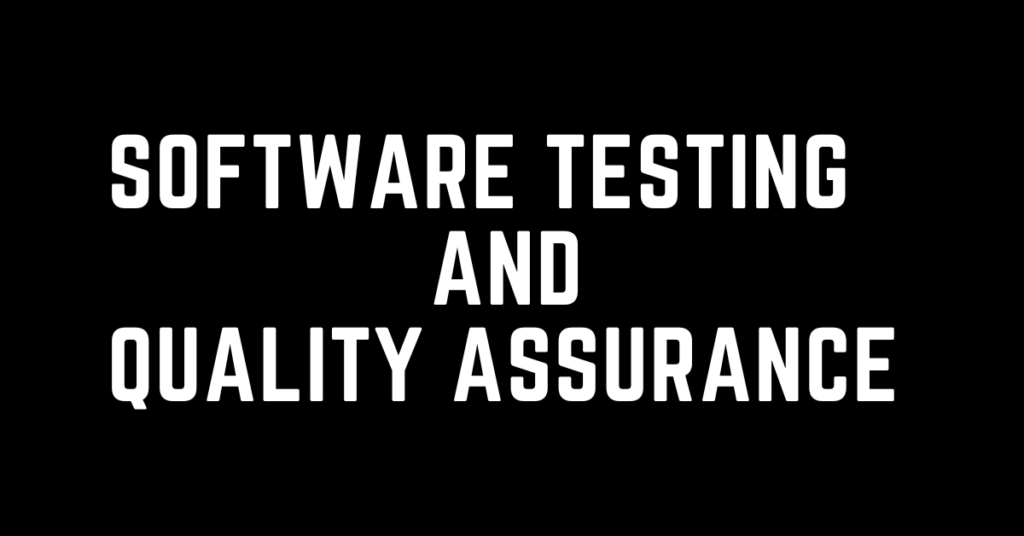Last Updated on May 14, 2024 by cscontents
What is software testing?
Software testing is the process of evaluating a software product to find errors or defects. It is an important part of the software development life cycle (SDLC) and helps to ensure that the software meets its requirements and is ready for use.
Types of software testing
There are many different types of software testing, each with its focus and objectives. Some of the most common types of software testing include:
- Unit testing: Unit testing is the lowest level of testing and involves testing individual units of code.
- Integration testing: Integration testing is used to test how different units of code interact with each other.
- System testing: System testing is used to test the entire software system as a whole.
- Acceptance testing: Acceptance testing is performed by the customer or end user to verify that the software meets their requirements.
- Performance testing: Performance testing is used to test the performance of the software under different load conditions.
- Security testing: Security testing is used to find vulnerabilities in the software that could be exploited by attackers.
- Usability testing: Usability testing is used to evaluate how easy the software is to use.
- Exploratory testing: Exploratory testing is an iterative approach to testing where the tester explores the software and identifies potential problems.
- Guerrilla testing: Guerrilla testing is a type of exploratory testing where the tester performs tests in a non-traditional way, such as using a mobile device or a different operating system.
- Regression testing: Regression testing is a type of testing that is performed to ensure that changes to the software have not introduced new defects.
Popular software testing tools
There are many different software testing tools available, each with its strengths and weaknesses. Some of the most popular software testing tools include:
Selenium: Selenium is a popular open-source tool for automating web application testing.
JUnit: JUnit is a popular open-source tool for unit testing Java code.
NUnit: NUnit is a popular open-source tool for unit testing .NET code.
TestComplete: TestComplete is a commercial tool for automated Windows, web, and mobile application testing.
Rational Functional Tester: Rational Functional Tester is a commercial tool for automated testing of IBM Rational software.
Virtuoso: Virtuoso is a commercial tool for automated testing of API endpoints.
What is Quality Assurance
Quality assurance (QA) ensures that the software meets its requirements and is of high quality. QA includes testing and other activities such as requirements gathering, design reviews, and code reviews.
QA testing is a broad term that encompasses all activities related to ensuring the quality of software. Integration testing is a specific type of testing that is performed to ensure that different units of code interact with each other correctly.

Quality Assurance (QA) vs. Software Testing
To understand QA vs. Software Testing we need to see the below diagram which clearly tells us about the overlap between QA and software testing.

“Software Testing” is one part of QA, but QA is a huge thing, it encompasses many things.
QA includes all types of software testing which is described above.
Reference link: Types of Software Testing
In addition to testing, QA also includes other activities such as:
- Requirements gathering: This is the process of gathering the requirements for the software from the stakeholders.
- Design reviews: This is the process of reviewing the design of the software to ensure that it meets the requirements.
- Code reviews: This is the process of reviewing the code of the software to ensure that it is free of defects.
- Documentation: This is the process of creating and maintaining the documentation for the software.
QA is an important part of the software development process. By ensuring that the software is tested and meets the requirements, QA can help to improve the quality of the software and prevent defects from reaching production.
How to automate testing as part of CI/CD
Continuous integration (CI) and continuous delivery (CD) are two software development practices that help to improve the quality and speed of software delivery. CI involves automating the process of building, testing, and deploying software. CD involves automating the process of deploying software to production.
Automating testing as part of CI/CD can help to improve the quality of software by catching errors early in the development process. It can also help to speed up the delivery of software by automating the testing process.
There are many ways to automate testing as part of CI/CD. Some common approaches include:
- Using a continuous integration server (such as Jenkins) to automate the build, test, and deploy process.
- Using a test automation tool (such as Selenium, Virtuoso, etc.) to automate the testing process.
- Integrating the test automation tool with the continuous integration server.
Conclusion
Software testing is an important part of the software development life cycle. By understanding the different types of software testing and the popular tools available, you can improve the quality and speed of software delivery.
Thank You.
If you are interested in learning DevOps, please have a look at the below articles, which will help you greatly.
- Basics of automation using Ansible | Automate any task
- Automation of Java installation – using Ansible
- Automation of Tomcat installation – using Ansible
- 10 frequently used ansible modules with example
- Jenkins Pipeline as code – High level information
- Jenkins pipeline script to build Java application and push artifacts into repository
- Jenkins pipeline script to build & deploy application on web server
- What is End-to-End Monitoring of any web application, and Why do we need it?
- What is “Monitoring” in DevOps? Why do we need to Monitor App/DB servers, Transactions etc.?

